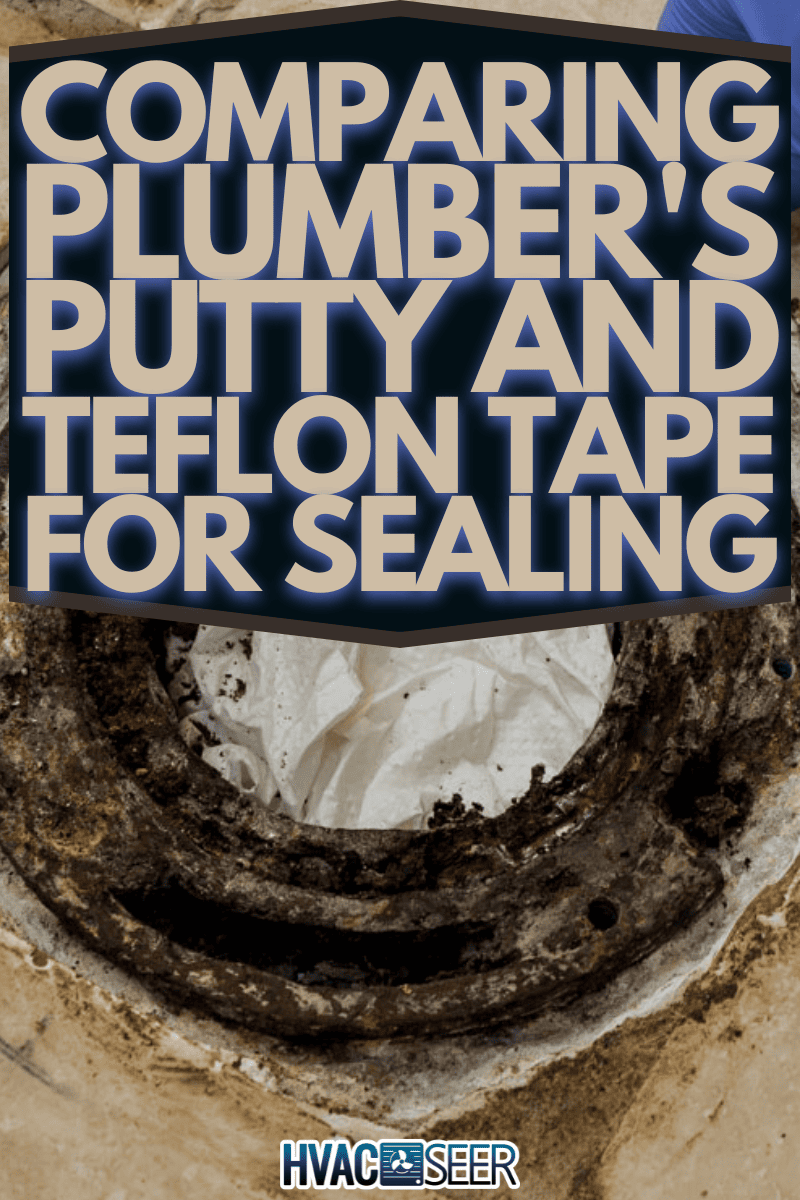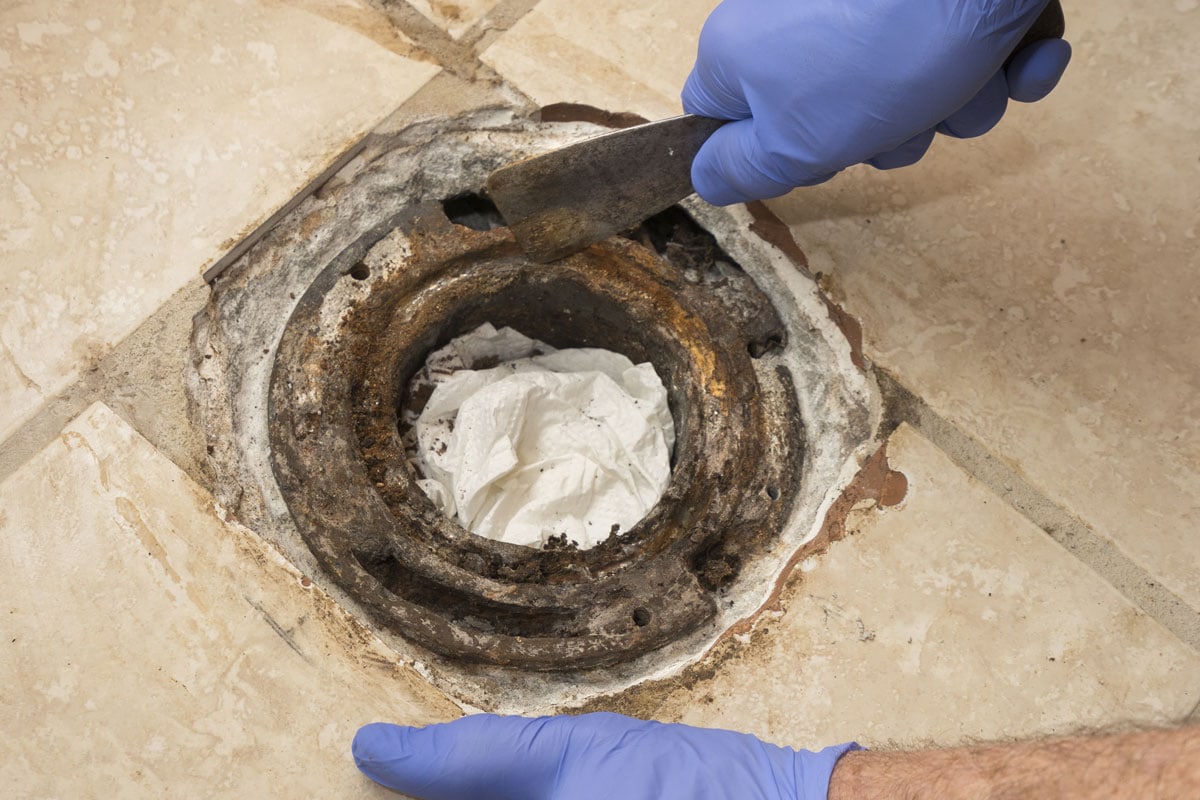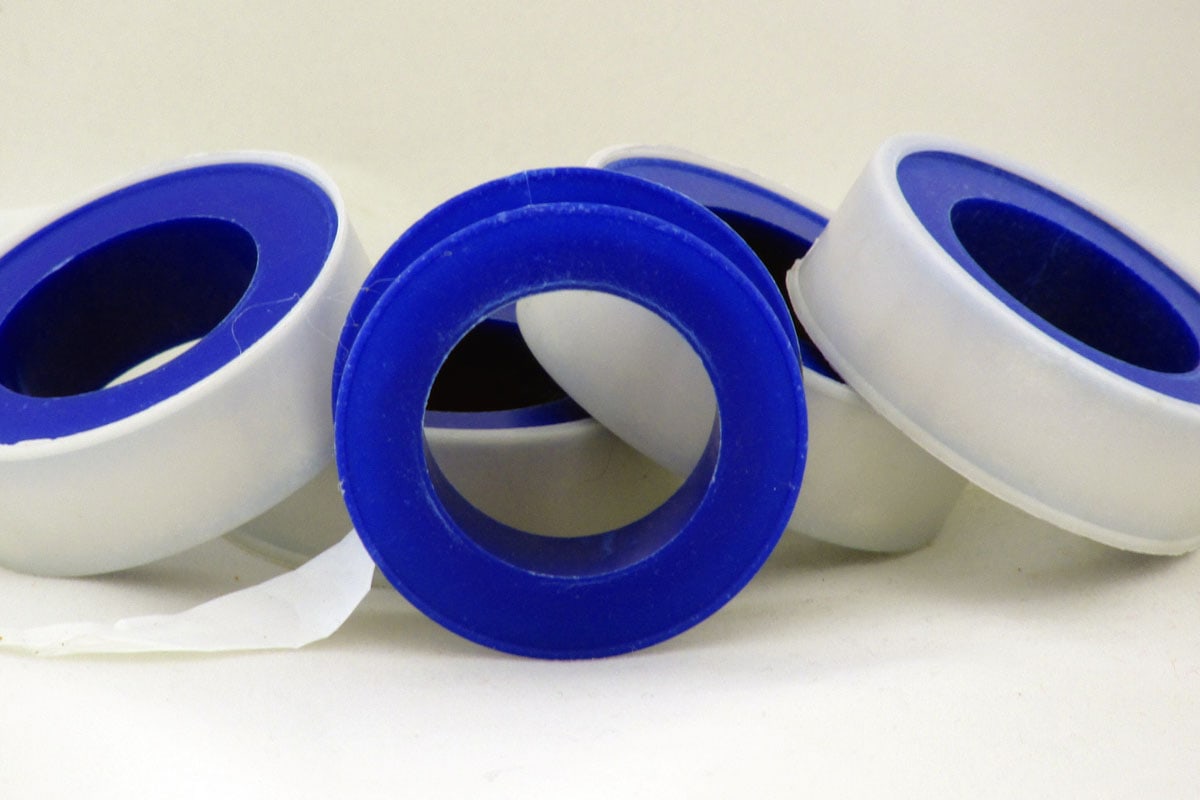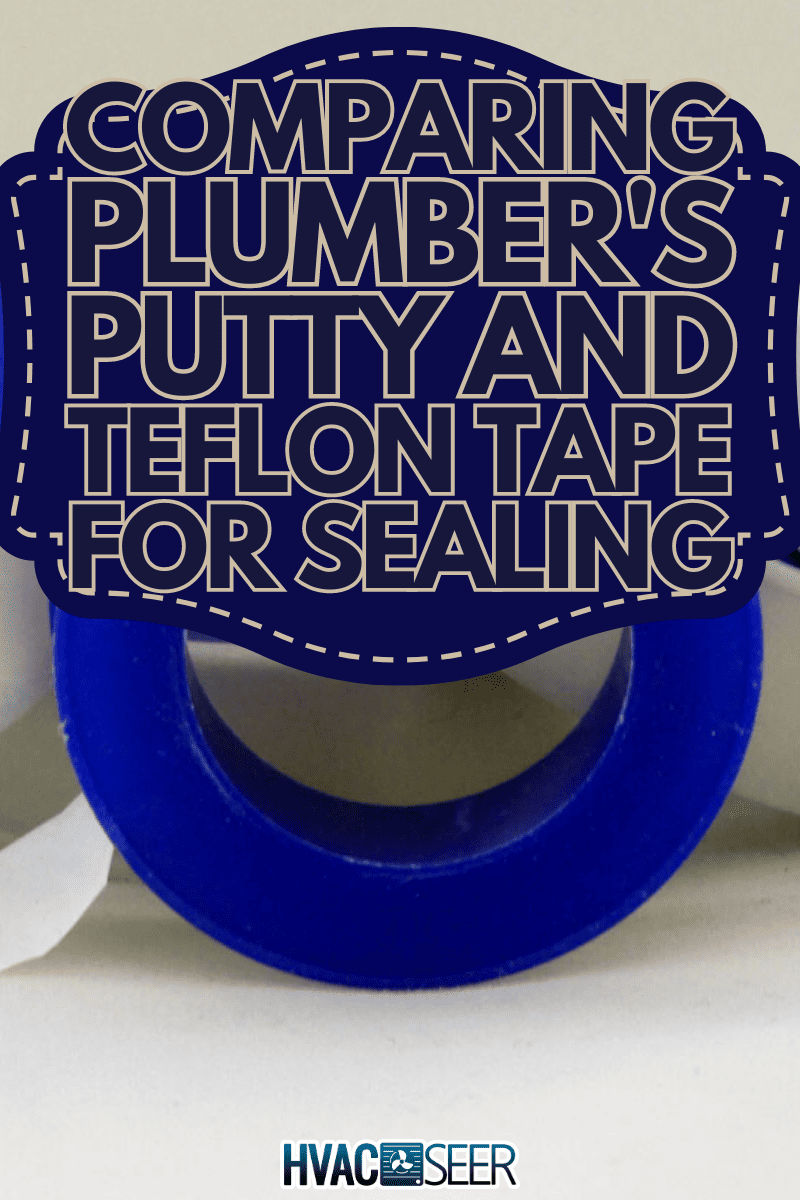When it comes to plumbing projects, choosing the right sealant is crucial for a leak-free and long-lasting result. Two common sealants that plumbers often use are plumber's putty and Teflon tape. Although they serve similar purposes in sealing, it is important to understand the best option for a specific plumbing task.
Both the plumber's putty and Teflon tape serve to prevent leaks in plumbing systems. However, they are used in different scenarios and have distinct advantages and disadvantages. In this article, we will explore the pros, cons, and differences between these two essential plumbing sealants, helping you make an informed decision for your next project.

What Are Plumber's Putty and Teflon Tape?
Plumber's putty and Teflon tape are two commonly used materials in plumbing to create watertight seals and prevent leaks. Though they have similar purposes, they are used in different situations, and their properties make them suitable for various applications.
Plumber's Putty
Plumber's putty is a sealing compound primarily used to create watertight seals between hard surfaces, such as a sink and a strainer. It is not used on threaded joints but is applied to connections and places where leaks occur. The composition of plumber's putty varies depending on the brand, but it is generally a semi-flexible material that can be molded to fit the desired application.


Get this plumber's putty on Amazon.
However, plumber's putty has some limitations. These include the inability to withstand significant pressure and the fact that it is not suitable for certain types of plumbing materials, like plastics, due to compatibility issues.
Teflon Tape
Teflon tape, also known as plumber's tape, PTFE tape, or thread-sealing tape, is used on threaded pipe joints. It serves as a sealant and lubricating compound, making it easier to tighten the connection between pipes, and it also prevents leaks. Teflon tape is especially useful for faucets, taps, and showers where threaded pipe joints are common.


Check out this Teflon tape on Amazon.
While Teflon tape is a versatile sealant, it is not suitable for every plumbing application. For example, it is not designed to create watertight seals between flat surfaces or around fixtures, unlike plumber's putty.
Pros And Cons of Plumber's Putty and Teflon Tape
Now that we've differentiated both plumber's putty and Teflon tape, you may be wondering about some of their advantages and disadvantages. We've listed them in this section to provide you with a better comparison between these two products.
Plumber's Putty

Advantages of Plumber's Putty
Plumber's putty is a versatile sealing compound that finds its use in various plumbing applications. Some of its advantages include:
- Easy to use: Plumber's putty is pliable and can be easily molded to fit various shapes and contours, making it an ideal choice for sealing joints and gaps.
- Water-resistant seal: The putty provides an excellent water-tight bond between surfaces, ideal for sealing strainers, drains, and faucets.
- Long-lasting: Once applied and set, plumber's putty can last for years, providing a reliable and durable seal.
- Removable: Although long-lasting, the putty can be easily removed if needed, allowing for maintenance or part replacement without damaging the surfaces.
Disadvantages of Plumber's Putty
Plumber's putty, while useful for specific applications, does have its drawbacks:
- It is not suitable for use on plastic pipes, as it can cause them to become brittle over time, potentially leading to leaks or other issues.
- Curing time can be a downside, as you need to wait for it to harden before it fully seals, which may not be ideal for temporary fixes.
- It cannot withstand significant pressure, meaning it's best used for situations where water resistance is needed without high pressure.
Teflon Tape

Advantages of Teflon Tape
Teflon tape, or PTFE tape, is a thin film that works as a sealant for threaded pipe joints. Its pros are:
- Simple application: Teflon tape can be quickly and easily wrapped around pipe threads, making it an efficient solution for sealing connections.
- Color-coded: Different types and densities of Teflon tape are color-coded, making it easy to identify the correct tape for a specific application (white for water pipes, yellow for gas supply lines, etc.).
- No curing time: Unlike plumber's putty, Teflon tape does not require any curing time, allowing for a faster installation process.
- Prevents galling and seizing: The tape acts as a lubricant, preventing threaded connections from seizing or galling, ensuring a secure and tight seal.
- Works with various pipe materials: Teflon tape can be used with a wide range of pipe materials, such as PVC, copper, brass, and steel.
Disadvantages of Teflon Tape
Similarly, Teflon tape comes with its own set of cons:
- It is not ideal for use in high-temperature situations, as it may not withstand heat and could release mildly toxic gases.
- Teflon tape's ability to resist friction under heavy pressure can be questionable, making it less reliable in some cases.
- It may be more difficult to apply properly, as getting the right amount of tightness around the threads can take some practice to avoid leaks or problems.
The limitations of both plumber's putty and Teflon tape can affect your plumbing project, and choosing the right product will ensure that you won't have any issues in the future.
Key Differences
Aside from the pros and cons of plumber's putty and Teflon tape, there are key differences between the two products. Here are some of them:
Application
Plumber's putty is a pliable, dough-like substance used to create watertight seals on joints and other surfaces. It is typically applied by hand, filling in gaps and conforming to the shape of the joint before being pressed into place.
Teflon tape, on the other hand, is a thin film wound on a spool in tape form. It is wrapped around the threads of a pipe joint, creating a seal as the pipe components are tightened together.
Durability
Plumber's putty is not resistant to high temperatures and may lose some of its adhesive strength at higher temperatures. It remains flexible at low temperatures, around 86°F.
On the other hand, Teflon tape can withstand both low and high temperatures, providing a durable seal in various conditions.
Suitable Materials
Both plumber's putty and Teflon tape are used on different materials and in different situations.
Plumber's putty is generally used with non-porous surfaces such as metal or plastic joints, while Teflon tape is suitable for various pipe materials and sizes.
Furthermore, Teflon tape comes in different colors that help identify specific applications. Plumbers like to use different colored tapes to make it easier to identify at a glance.
How to Choose the Correct Material for Your Project

When working on a plumbing project, it is essential to choose the right material to ensure a watertight seal and proper connection between the various components. The material you should use greatly depends on the application you will be using it in.
To determine which material is best for your project, consider the following factors:
- Type of connection: For non-threaded connections, such as those between a sink and a strainer, plumber's putty is the appropriate choice. For threaded joints, Teflon tape is a better option to ensure a secure and leak-proof connection.
- Temperature fluctuations: If your project involves surfaces that may expand and contract due to temperature changes, plumber's putty is the better choice due to its ability to remain flexible.
- Lubrication: When you need lubrication to tighten or loosen threaded connections, Teflon tape is the preferred material, as it offers both sealing and lubricating properties.
Seal It Up
Generally speaking, both plumber's putty and Teflon tape serve essential purposes in plumbing work. They are not interchangeable and are designed to address different types of connections and sealing requirements. Understanding their unique properties and functions should make it easier for you to choose the necessary material when tackling various plumbing tasks.
In conclusion, both plumber's putty and Teflon tape are important tools within the plumbing industry. By using them as intended and considering their different capabilities, you can achieve effective sealing in various plumbing situations. If you are unsure what to use, don't hesitate to ask a professional to avoid problems with your plumbing in the future.
Read more about plumber's putty here:


